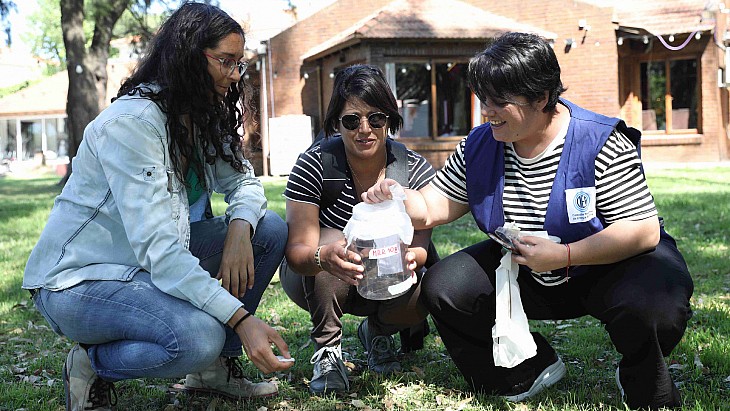The male mosquitoes are being coloured with a fluorescent orange or green powder, with the National Atomic Energy Commission (CNEA) saying that the released mosquitoes do not bite or infect and "it is important not to kill them". The colours are said to be almost imperceptible to the human eye, but allows them to be identified with UV light.
Germán Guido Lavalle, CNEA President, said: "This technique consists of irradiating male insects to make them sterile and prevent reproduction. It is effective against a lot of pests and, with the capacity we have at CNEA, we adapted it for Aedes aegypti (yellow fever mosquitoes). We have been doing tests and they have worked well."
The first area to benefit is the region around the Ezeiza Atomic Centre, starting in Barrio Uno where 25,000 mosquitoes were released last week for a marking, release and recapture trial supervised by the International Atomic Energy Agency (IAEA).
Aline Macedo, from the IAEA, said: "Diseases caused by mosquitoes, mainly Aedes aegypti, have a high incidence in South America. With this technique we want to help countries reduce the populations ... to cut the transmission of diseases. It is an environmentally very safe technique. The IAEA has been working with it for a long time to control fruit flies."
The CNEA has been taking part in a project with the IAEA to adapt the Sterile Insect Technique to reduce the Aedes aegypti population in South America.
At the Ezeiza Atomic Centre, there is a mosquito breeding laboratory, where males are separated for marking and then sterilisation with ionising radiation. The sterile males are then released, and when they mate they do not produce offspring, so the total population declines.
The test release includes setting up traps to collect both sterile and wild mosquitoes to determine the survival and distance travelled by the sterile males.
Mariana Malter Terrada, head of the Department of Agricultural Applications at CNEA, said that the first releases of the insects and the tests "will allow us to adjust the parameters so that future releases are a success".
The plan is to release batches of 80,000 per week for a year, with the positive impact expected to be noticeable after about four months.
Dengue is most common in tropical and subtropical climates and its symptoms include a high fever, severe headaches, swollen glands and rashes. According to the World Health Organization there have been more than 500,000 cases reported in Argentina this year.





_23621.jpg)

_63865.jpg)
_18570.jpg)





